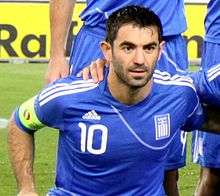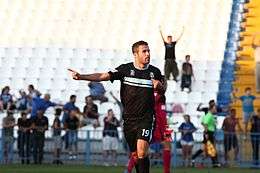Apollon Smyrni F.C.
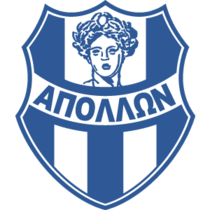 | |||
| Full name |
ΠΑΕ Γυμναστικός Σύλλογος Απόλλων Σμύρνης (Gymnastics Society Apollon of Smyrna) | ||
|---|---|---|---|
| Nickname(s) |
Ελαφρά Ταξιαρχία (Light Brigade) Kυανόλευκοι (Cyan-Whites) | ||
| Founded | 1891 | ||
| Ground |
Georgios Kamaras Stadium Athens, Greece | ||
| Capacity | 14,856 | ||
| Owner | Asia Minor Land Sports Capital | ||
| President | Hector Monemvasiotis | ||
| Manager | Dimitris Spanos | ||
| League | Football League | ||
| 2015–16 | Football League, 4th | ||
| Website | Club home page | ||
|
| |||
| Departments of Apollon Smyrni | ||||||||||||
|---|---|---|---|---|---|---|---|---|---|---|---|---|
|
Apollon Smyrni F.C. (Greek: ΠΑΕ Απόλλων Σμύρνης), or in its full name Gymnasticos Syllogos Apollon Smyrnis (Greek: Γυμναστικός Σύλλογος Απόλλων Σμύρνης, Gymnastics Society Apollon of Smyrna) is a Greek football club based in the city of Athens, that plays in the Super League. It was founded in Smyrna in 1891 and is one of the oldest sports clubs in Greece.[1][2] Apollon has departments in football, basketball, volleyball, water polo and other sports.
History
Smyrna era (1891–1922)
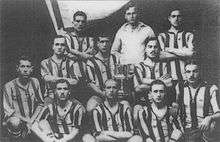

Apollon Smyrna was founded in 1891 by former members of club Orpheus. Orpheus (subsequently Panionios) had been founded one year earlier in 1890. Among the founders of Apollon were prominent residents of Smyrna such as Chrysostomos of Smyrna and Vasilis Samios.[1][2]
Roughly in the year of 1893, the athletic department was organised. The first games of Smyrna took place in 1894, organized by the English sports fans of Bornova. In these games the athletes of Apollon achieved a lot of first victories. The person with the most wins was Theologos Anastasoglou, a glorious athlete who later became Olympic champion; he was most likely the best athlete from Apollon. The Games were always organized by English sports fans until 1903, with the attendance of the Gymnastic Association Apollon Smyrnis.[1][2]
The third anniversary of the foundation of Apollon was celebrated joyously. Chairman N. Koulmasis gave the speech of the day, while the famous S. Pittakis spoke of Delphi and recited the anthem to the god Apollo. There was a special pedestal on which had been set up an altar to praise the god Apollo, while eight youths dressed in chlamydes sang the Pindariko anthem to Apollo.[3]
In 1894, with the election of its new presiding board, Apollon adopted as its emblem three runners and at the same time it established an excursion department. Of the first excursions that were organized, one was to Ephesus and another to Aidini, in which the Russian scholar and historical Frigkol took part.[2]
In 1894, the council of the Gymnastic Association of Apollon (Apollon Sports Club) was composed of chairman Mathaios Provatopoulos and Th. Vatidi, Jakovos Koulampidis, Grig. Sofianopoulos, G. Oikonomidis, A. Koulampidis and C. Papadimitriou. During this season the team acquired a privately-owned ground. Initially, only its members fought on these. Later, however it organized games in which other associations could also take part.[1]
Stadium
Apollon acquired its own stadium in 1894. At this point we should examine a little the background of the foundation of the first ground of Apollon. Fourteen years before, in 1880, Ioannis Damvergis with Apostolos Psaltof, Stefanos Papamihalis and I. Makroulidis, all students of the Evangelic Faculty of Smyrni, created an off-hand gym in some open space, known with the name “love arena”. After they opened the ground, they set up a perimeter using ropes because of a lack of money. Then, with hard economising, they bought a horizontal bar and other gymnastic equipment. The youth of Smyrni exercised there paying a symbolic price. Makroulidis was made cashier. This primitive gym constituted the precursor of the gym of Apollo, but was also the fountain for the later great athletes of the association. For this reason, the creator of this gym, Apostolos Psaltof, was called the “grandfather'” of Apollon. Later the gymnastic association "Apollon Smyrnis" moved to a space opposite the Greek Orphanage where was then built a big and modern gym in the district of Saint Tryfon, near the famous theatre "Terpsithea".[1][3]
In 1901 Apollon organized the first boat races in Smyrni, with the attendance of the other big Smirni association, "Panionios", which was founded in 1898 and came forth from the union of associations "Orpheus"" and "Gymnasium".[2]
In 1906, the teams were joined in these races by another association, Pelopas, that resided in Melantia (Karatas) and was founded by Omiros Onasis, uncle of the tycoon and shipowner Aristotelis Onassis. He was the one that imported the sport of boxing to Smyrni to great success.
In 1904 Apollon undertook the organisation of the athletic fights of Bornova, taking over the management from the previous organizers, who were the English sports fans of Smyrni. These athletic games, under the inspired guidance of people from the Apollon club, were a huge success constituting a turning point in the history of the team. For the needs of the athletic games, the Apollon Stadium of Bornova was renovated completely by the architect B. Litti and acquired a track of 400 metres and a seating capacity for 6.000 spectators!
Apollonian Games
On 6 and 8 May 1904, the Apollon Stadium of Bornova organised the first Apollonian Games with the attendance, not only of the organizers, the "Gymnastic Association Apollo Smyrnis" and the "Athletic Organization of Bornova", but also the "Athletic Union of Smyrni" as well. Remarkably, the making of these games was all under the supervision of prefect of Smyrni, Kiamil pasa, a measure of the huge scope and power of this association. The committee of the athletic games consisted of: Sokratis Solomonidis, Xristos Athanasoulas, Xenophon Dimas, Kostas Kotzias, Petros Mposkovik, A. Vanterze and Richard Whittes. The committee of ellanodikes was composed of Nikos Stavridis (chairman of Apollon), E. Fintao and D. Whittes. The opening ceremony for the first Apollonian Games started with a parade of all athletes under the sounds of music that was played by the orchestra of Apollon with director I. Magglis. The gymnastic association "Apollon Smyrnis" took part with 54 athletes. The biggest attraction was the 10,000m run, won by L. Venizelos with a time of 34'43. Another popular game attraction was the "sakodromies" (small jumps), a race of 60m, in which the runners were fully surrounded with cloth sacks up to their necks. Afterwards, at the end of the games, there was the handing-over of prizes and the athletes, followed by thousands of spectators and escorted by the orchestra of Apollo, walked till the railway station of Bornova, from where they took off to Smyrni by special train. From the railway station of Mpasmahane to the offices of the Apollon Gymnastic Association in the Bella Vista, a “lampadidodromia” (running with torches) took place. The "Apollonia" aka Apollonian Games were held in Smyrni, with exceptional success, ten times in total. In these games took part almost all athletic associations of Smyrni, Greek and foreign, except the Turkish clubs.[1]
Rivalry between Apollon and Panionios
This period is also the beginning of the great rivalry between Apollon and Panionios, which has continued till modern times, fortunately without any extremes. The point of contention was the claim of supremacy in the capital of Ionia. However, this antagonism was progressively blunted, since the men of Apollon were active mainly in football and went on to create one of the most powerful teams of Asia Minor and one of the three most important teams in Greek lands, whereas Panionios was focused on the track, producing some very important athletes. In 1904, Apollon took part in the Pan-Hellenic athletics that were organized in Athens. The city of Smyrni was represented by athletes from Panionios and Apollon. The athletes of the Gymnastic Association Apollon Smyrnis gained a lot of victories: Theologos Anastasoglou, Mathaios Despotopoulos, Kiros Alexiou, Dimitrios Mouratis and X. Lohner. Athenian man of letters, I. Damvergis, who represented Apollon in Athens, announced the news of the victories to Smyrni via telegraph. The chairman of Apollon answered: “We are grateful to you, give our congratulations to the champions. On May 1st 1905, the Apollon club celebrated with magnificence. With the music orchestra of Apollon at its head, the association organised a parade of all of the club athletes in the major streets of Smyrni. In 1906, common games were organized in Smyrni for the athletes of Apollon and Panionios. In these games victors for Apollon were the following athletes: Gounaris, Patestidis and K. Alexiou. In the same season, the Gymnastic Association Apollon Smyrnis suggested replacing the Apollonian and the Panionian Games of Smyrni with Pan Minor-Asian games. This effort however was not realised due to strong opposition from Panionios. In the same year (1906) Apollon took part in the Olympic Games of Athens (Middle Olympics). Its athletes Theologos Anastasoglou and Mathaios Despotopoulos were winners in pentathlon, writing yet another brilliant page in the history of the club.[1]
The football team
1910 was a very important year in the history of Apollon. During this year the football team of the club was founded, with swastika as its emblem - a cross which is an ancient Greek symbol. Apollon fans loved this sport in particular, giving it the first place in their hearts. To this contributed of course the club's soccer players with their fighting spirit and their high morals. The club competed in football matches with all the teams of Smyrni, as well as with teams of sailors on foreign navy ships that were harboured in the Ionian capital. In 1911 Apollon accomplished a victory over the most powerful soccer team of the season, the team of the Austrian warship "Wirintous"! It is notable that the Austrian admiral sent a congratulations telegram to the presiding board of Apollon. Important also is the victory achieved in 1918 against the almighty team of English warship "Minitor 19", the first warship that had sailed into the harbour of Smyrni, after the defeat of Turkey in the First World War. Successes began to come one after the other and before long Apollon became the leading football association of Ionia. Characteristically, it won the Championship of football games held in Smyrni continuously on the years between 1917 and 1922.
In the Olympic Games of Antwerp (1920) the footballers of Apollon, A. Gkillis, D. Gottis, I. Zaloumis and Fotiadis, took part in the Greek national football team. The final accomplishment of Apollon in Smyrni was in 1922 when it gained the title of champion. Thousands of Apollon fans celebrated this huge success, that was to be the last before the destruction of Smyrni. In the football team of Apollon that year were: Kajsaris, Koygjoyntogloy, Tsarls, Taloymis, Mayromma'tis (Haralampakis), Hrysoylis, Kampoyropoylos, Samjos, Papagjannis, Gottis, Gkjlis, Alevizakis, Domeniko, Viglatsis, Zaloumis, Kimitsopoulos, Magoulas, Marselos and the goalkeepers Fotiadis (main) and Zeimpekis (substitute). Two of them, Marselos and Hrysoulis, were captured and remained forever on Ionian soil. Also, in Smyrni remained as captives, A. and G. Kyrou, members of the council of Apollon, as well as champion of track Kr. Persis, the traces of whom were lost from then on. The council of Gymnastic Association Apollon Smyrnis, on the last year at Smyrni was composed of: D. Marselos (chairman), J.Garyfalos (general secretary), A.Kyrou (special secretary), and Hatzithomas (cashier).[1]
Apollon in Athens (1922—)
After the Asia Minor Catastrophe and the expulsion of the Greeks from Asia Minor, Apollon moved to Athens. The club's first home ground was located at a place near the Greek Parliament called "Stiles Olympiou Dios" (Pillars of Olympian Zeus). Apollon stayed there for about 25 years, and after World War II the club's house was again transferred to an Athens neighbourhood called "Rizoupoli" and a stadium was built there, Georgios Kamaras Stadium, named after club legend Georgios Kamaras. The club has four departments: the football department called "Apollon Smyrnis FC", a basketball club called "Apollon BC", a volleyball club and a fighting department. The best known (and probably the most successful) department is the football club. Apollon FC participated in the Alpha Ethniki championship for many years, with the exception of seasons 1969/70, 1972/73, 1974/75, 1986/87. The team won the local Athens Championship five times, on 1924, 1928, 1938, 1948 and 1958
Seasons 1994/95 and 1995/96 are the club's most successful seasons: In 1994/95 Apollon qualified for the 1995-96 UEFA Cup (preliminary round) where they played against Olimpija Ljubljana. Georgios Kamaras Stadium was not suitable for the game, so Apollon played in AEK Athens' home ground, Nikos Goumas Stadium. Apollon won 1-0 in Athens in front of 10,000 fans but lost 3-1 in Ljubljana and was eliminated (Olimpia scored 2 goals in the last 15 minutes). In those matches, many people noticed a young striker (just 21 years old at the time) who would become European football Champion almost ten years after; his name was Demis Nikolaidis The following season (1995–1996) Apollon FC, under the coaching of Giannis Pathiakakis and thanks to Demis Nikolaidis's capital scoring performances, reached the Greek Cup final after an excellent season, where they lost 7-1 to AEK Athens. After these great seasons, Apollon's glory started to fade and as a result, in the 1999/2000 season Apollon was relegated to Beta Ethniki. Then, in 2005 it was relegated to Gamma Ethniki (South Group) and finally, in 2007, to Delta Ethniki (Group 8).
Apollon have gone since the 1930s under the nickname "The Light Brigade" (Greek: Ελαφρά Ταξιαρχία), named after the 1936 Hollywood movie The Charge of the Light Brigade, after winning the 1938 regional Athens championship.
Alamanos era (1979—2005)
In 1979, with the Greek football turning professional, Kostas Alamanos became the major shareholder and president of the team and remained so until 2005. He helped Apollon reach the UEFA Cup preliminary round and the Greek Cup final, but after the departure of many of the team's best footballers, Apollon were unable to recover and in 2000 they were relegated.
Today
Apollon managed to return to the First Division in the 2012-13 season, with Stamatis Vellis, a business shipping magnate, as the new owner. In 2014, Vellis resigned from the presidency of Apollon. He testified to the district attorney that the fate of the team depended on the actions of corrupt members of the Hellenic Football Federation, naming a number of officials currently accused in the 2015 Greek football scandal.[4]
Today, the team plays in the Football League.
Trivia

- Apollon have gone since the 1930s under the nickname "The Light Brigade" (Greek: Ελαφρά Ταξιαρχία), named after the 1938 Hollywood movie The Charge of the Light Brigade, after winning the 1938 regional Athens championship.
- Since 1910 the team's badge was a swastika-like cross. But after the Nazi invasion of Europe it was changed to Apollo's head for obvious reasons.
- The last time an Apollon FC player was an active member of the Greek national football team was on May 8, 1996 (Demis Nikolaidis, Greece - Georgia 2-1). Since then, no Apollon FC player has been a member of the national team.
- Georgios Kamaras Stadium was in bad shape during the 90's, but it was renovated in 2002 by Olympiakos FC. Olympiakos used this stadium as their home ground until Georgios Karaiskakis Stadium was constructed in 2004.
- Kostas Alamanos was shareholder and team president from the late 70's until 2005. He helped Apollon reach the UEFA Cup preliminary round and the Greek Cup final and for many years, was beloved by Apollon fans. But after these successful seasons, Alamanos became Persona non grata for the fans, mainly because he sold many of the team's best footballers (Demis Nikolaidis, Blendar Kola and Theofilos Karasavidis) and released most of the remaining team as free agents. The team was unable to recover from these losses, and in 2000 were relegated. That's why Apollon fans are calling Alamanos "The Unmentionable".
- Still today Apollon is the 9th team with respect to number of appearances in the top league of Greece (37/53)
Crest and colours
The emblem of the club is Apollo. The current crest depicts the head of Apollo Citharoedus (or Musagetes). The colours of the team are cyan (light blue) and white.
First
|
1923-24
|
1937-38
|
1937-38 (A)
|
2014–15
|
2014-15 (A)
|
2014–15 (A)
|
Current sponsorships:
- Official Sponsor: OPAP, Venetis Bakery Chain
Honours
- Superleague Greece
- Greek Cup
- Runners-up (1): 1996
.png) Athens FCA Championship
Athens FCA Championship
- Winners (4): 1924, 1938, 1948, 1958
- Second Division: (4)
- 1970, 1973, 1975, 2013
- Third Division: (1)
- 2012
- Fourth Division: (1)
- 2010
Current squad
As of 28 August 2016.[5]
Note: Flags indicate national team as defined under FIFA eligibility rules. Players may hold more than one non-FIFA nationality.
|
|
Notable former players
|
|
|
Managers
 Manol Manolov (July 1, 1979 – June 30, 1980)
Manol Manolov (July 1, 1979 – June 30, 1980) Tomislav Kaloperović (July 1, 1988 – June 30, 1989)
Tomislav Kaloperović (July 1, 1988 – June 30, 1989) Walter Skocik (July 1, 1990 – June 30, 1991)
Walter Skocik (July 1, 1990 – June 30, 1991) Christos Archontidis (July 1, 1998–Sept 3, 1999)
Christos Archontidis (July 1, 1998–Sept 3, 1999) Stathis Stathopoulos (July 1, 2011 – March 20, 2012)
Stathis Stathopoulos (July 1, 2011 – March 20, 2012) Giannis Georgaras (March 19, 2012 – June 30, 2012)
Giannis Georgaras (March 19, 2012 – June 30, 2012) Bledar Kola (July 21, 2012–Aug 7, 2012)
Bledar Kola (July 21, 2012–Aug 7, 2012) Alexandros Vosniadis (Aug 7, 2012–Oct 8, 2013)
Alexandros Vosniadis (Aug 7, 2012–Oct 8, 2013) Babis Tennes (Oct 10, 2013–Nov 11, 2013)
Babis Tennes (Oct 10, 2013–Nov 11, 2013)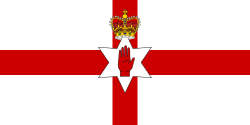 Lawrie Sanchez (Nov 17, 2013–June 16, 2014)
Lawrie Sanchez (Nov 17, 2013–June 16, 2014) Nikos Kostenoglou (July 5, 2014–)
Nikos Kostenoglou (July 5, 2014–)
League statistics
Positioning in Greek league
| 1960s | Position | 1970s | Position | 1980s | Position | 1990s | Position | 2000s | Position | 2010s | Position |
|---|---|---|---|---|---|---|---|---|---|---|---|
| 1959–60 | 4th | 1969–70 ↑ | 1st div.2 | 1979–80 | 17th | 1989–90 | 15th | 1999-00 ↓ | 17th | 2009–10 ↑ | 1st div.4 |
| 1960–61 | 5th | 1970–71 | 6th | 1980–81 | 12th | 1990–91 | 11th | 2000–01 | 6th div.2 | 2010–11 | 6th div.3 |
| 1961–62 | 3rd | 1971–72 ↓ | 17th | 1981–82 | 15th | 1991–92 | 5th | 2001–02 | 12th div.2 | 2011–12 ↑ | 1st div.3 |
| 1962–63 | 8th | 1972–73 ↑ | 1st div.2 | 1982–83 | 10th | 1992–93 | 12th | 2002–03 | 8th div.2 | 2012–13↑ | 1st div.2 |
| 1963–64 | 5th | 1973–74 ↓ | 17th | 1983–84 | 10th | 1993–94 | 13th | 2003–04 | 10th div.2 | 2013–14 ↓ | 17th |
| 1964–65 | 6th | 1974–75 ↑ | 1st div.2 | 1984–85 | 11th | 1994–95 | 4th | 2004–05 ↓ | 14th div.2 | 2014–15 | 3rd div.2 |
| 1965–66 | 10th | 1975–76 | 14th | 1985–86 | 11th | 1995–96 | 11th | 2005–06 | 14th div.3 | 2015–16 | 4th div.2 |
| 1966–67 | 11th | 1976–77 | 16th | 1986–87 ↓ | 15th | 1996–97 | 9th | 2006–07 ↓ | 14th div.3 | ||
| 1967–68 | 12th | 1977–78 | 12th | 1987–88 ↑ | 3rd div.2 | 1997–98 | 10th | 2007–08 | 8th div.4 | ||
| 1968–69 ↓ | 14th | 1978–79 | 10th | 1988–89 | 13th | 1998–99 | 14th | 2008–09 | 2nd div.4 |
European matches
| Season | Competition | Round | Club | Home | Away |
|---|---|---|---|---|---|
| 1995–96 | UEFA Cup | 1st Round | 1–0 | 1–3 | |
Supporters
Supporter groups:
- Anagennisi (ANA)
- Apollon Ultras
- Blue Angels
- Gate 1
- Ultras Votanikos
- Ultras Loutsa
- Club Patissia, Rizoupoli, Kipseli
- Club Nea Ionia
- Club Vyronas, Kesariani, Pagrati
- Club Volos
- Club Paros
- Apollonian Light Brigade (International Supporters Club)
- Basso Rango Ultras
Friendships:
References
- 1 2 3 4 5 6 7 8 "Club Apollo Smyrna". Encyclopaedia of the Hellenic World. Retrieved 11 July 2014.
- 1 2 3 4 5 "History". fcapollon.gr. Retrieved 11 July 2014.
- 1 2 "Η ίδρυση". apollongs.gr. Retrieved 11 July 2014.
- ↑ Kαταγγελίες Βελλή
- ↑ "Archived copy". Archived from the original on 2016-03-26. Retrieved 2016-03-07.
External links
| Wikimedia Commons has media related to Apollon Smyrnis. |
- Official website (Greek)
- Apollon Smyrnis Fansite (Greek)

